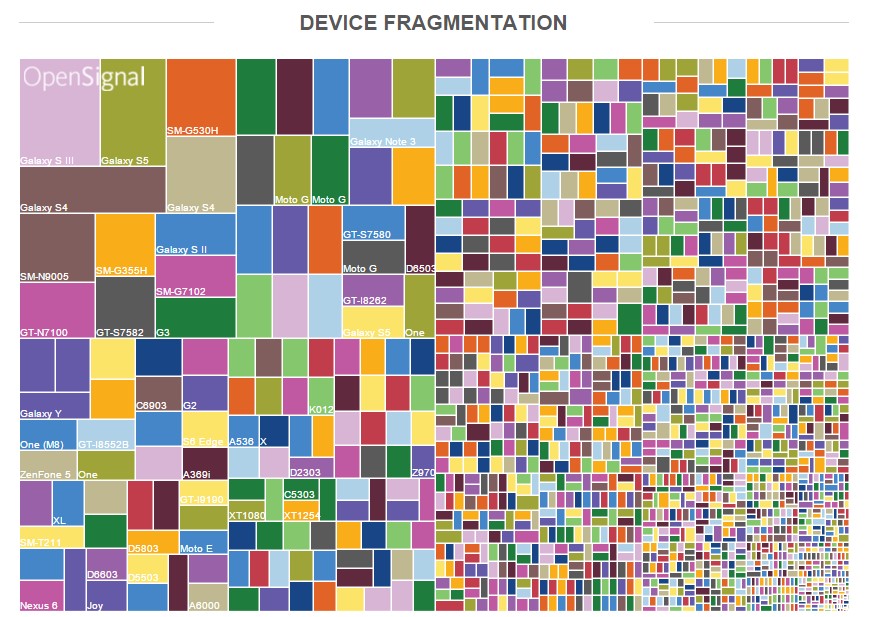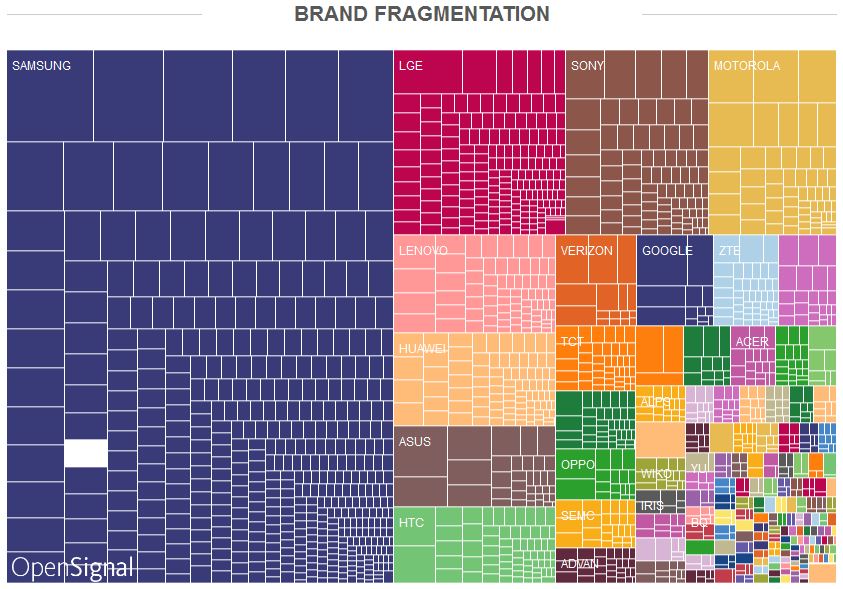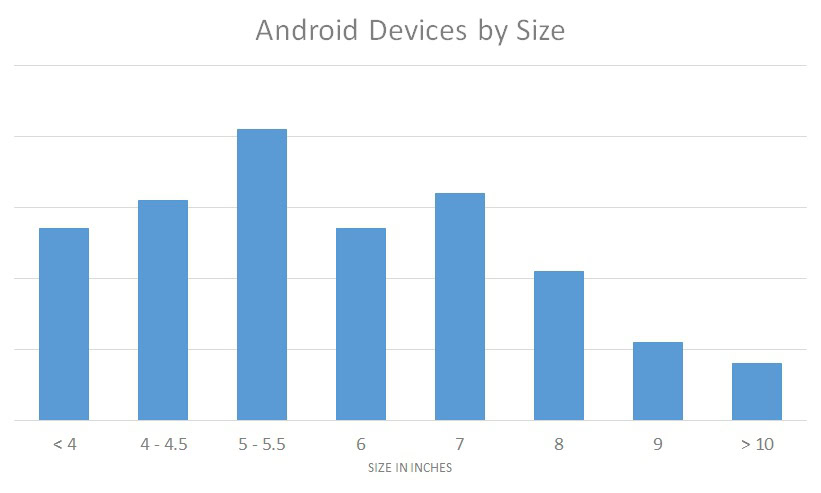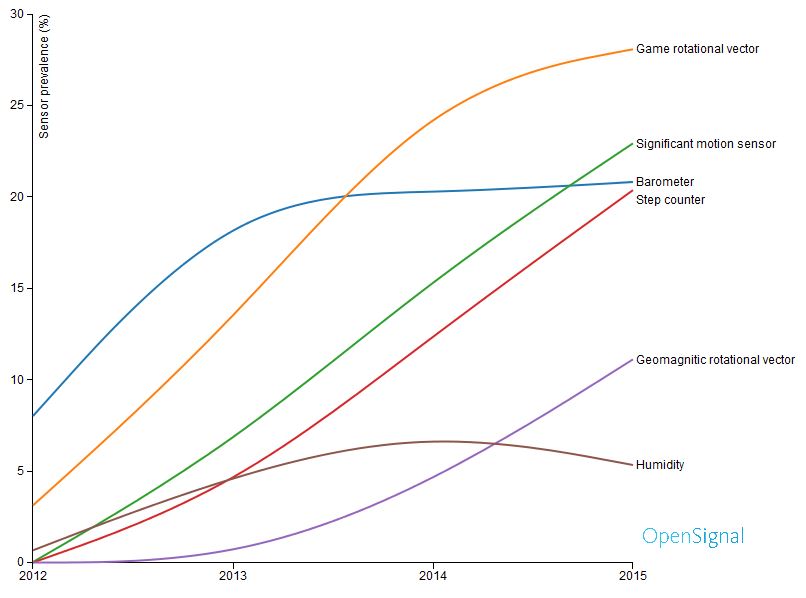Affiliate links on Android Authority may earn us a commission. Learn more.
OpenSignal 2015 report showcases Android diversity and the trends that shape the industry

Android fragmentation is both a blessing and a curse for users and developers alike. OpenSignal’s latest report sheds some light on the huge variety of Android hardware out there, as well as a few interesting market trends.
Beginning with the big issue, Android is more fragmented than ever before. But this shouldn’t be so surprising, given the even wider selection of devices available and the launch of another version of the operating system last year. The researchers found that 24,093 distinct devices downloaded its app in the past few months, up from 18,796 from last year and 11,868 in 2013, suggesting that a broader range of handset is on the market right now that just two years ago.
Samsung’s Galaxy series still remains the most popular range of smartphones on the market, followed by LG’s flagship G series, Sony’s Xperia Z line-up and the various versions of the Moto G. Samsung retains is position as the dominant Android manufacturer, with 37.8 percent of the market, down from 43 percent last year. The rise of lower cost manufacturers can also be easily observed, with Lenovo, HUAWEI, ASUS, Motorola, OPPO and TCT (Alcatel) all taking up big chunks of the global market this year.

However, it is not just big brands resulting in more diversification. OpenSignal counted devices from 1,294 distinct manufacturers, over 1,000 of which did not appear in the company’s first report back in 2012. New manufacturers, such as OnePlus, account for some of this, as does the rise in white box products that have cropped up as computing component and manufacturing costs have continued to fall.
Of course, more manufactures invariably leads to a wider range of hardware options. Research points to a growing selection of screen sizes available within the Android ecosystem, as you’ve probably spotted, which encompasses smartphones and tablets. Sensor technology also continues to expand, as customers look for new ways to interact with their smart devices.

The move towards devices falling between 5 and 7 inches is supported by the popularity of devices like the Samsung Galaxy Note series. Many consumers appear to want devices that can fill dual roles as a phone and small personal computer.

One feature that doesn’t appear in OpenSignal’s data but has cropped up in a number of smartphones this year is fingerprint scanning technology. As with much of these extras, falling hardware costs are gradually brining these previously high-end exclusive features to a wider range of handsets.
Turning to the Android operating system itself, the most recently published data from Google puts Android Lollipop at an 18.1 percent share of the market (combined for 5.0 and 5.1) and the operating system’s fragmentation has begun to heal slightly now that adoption is more widespread. Android KitKat still remains the more prevalent API level, with 39.3 percent of the market.

On the plus side, KitKat and Lollipop devices combined now account for 57.4 percent of the Android ecosystem. Half of all Android devices are now at least running a modern version of the OS. Somewhat unfortunately, the introduction of Android M later this year will likely upset the balance again.
For developers, the wide range of hardware options, display sized and API levels spread across the Android ecosystem is certainly a daunting task to tackle. Especially then it comes to trying to optimize for this many combinations. For consumers, new products, new companies, and a wide selection of hardware and price points has helped to bring more than one billion customers into the world of smartphones. Pros and cons I suppose.